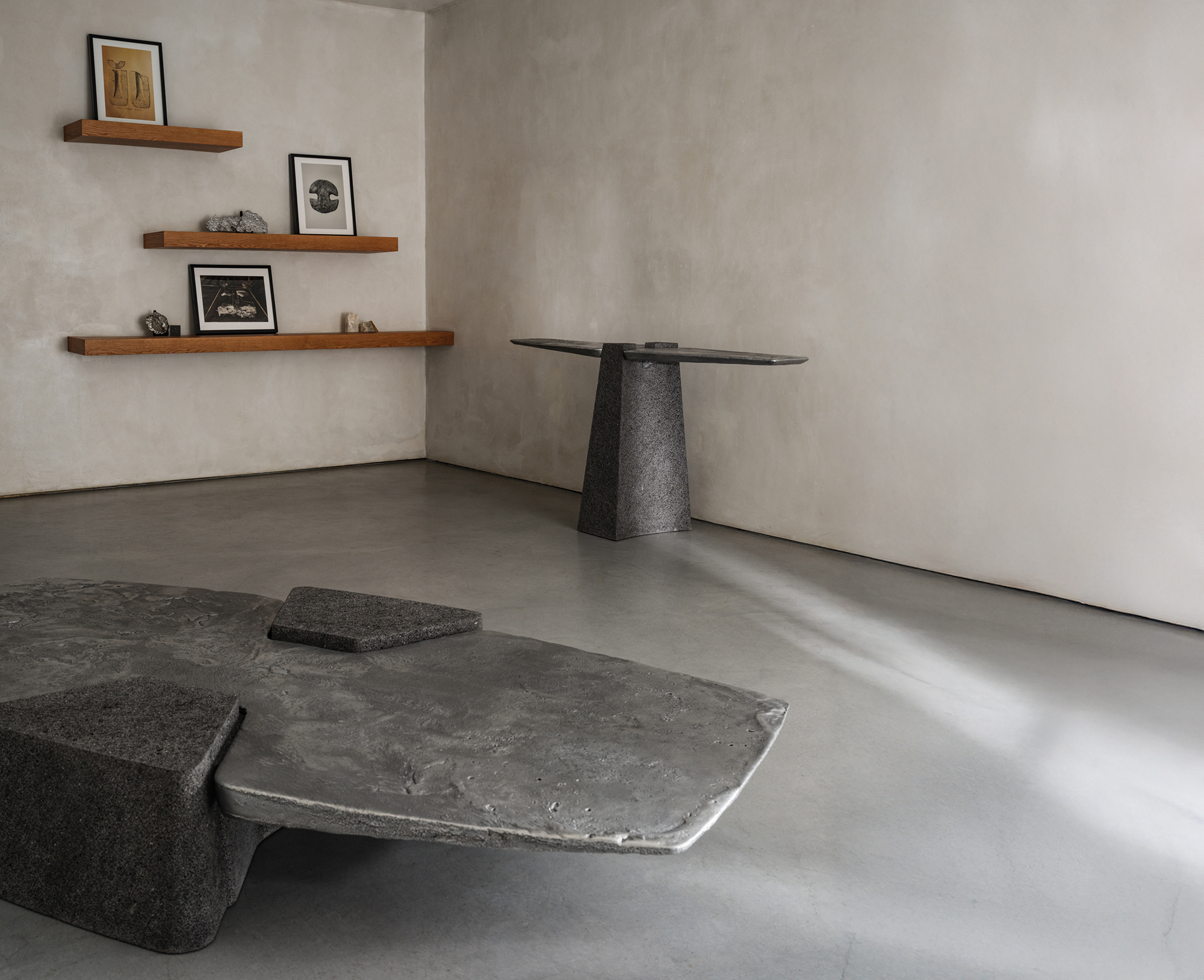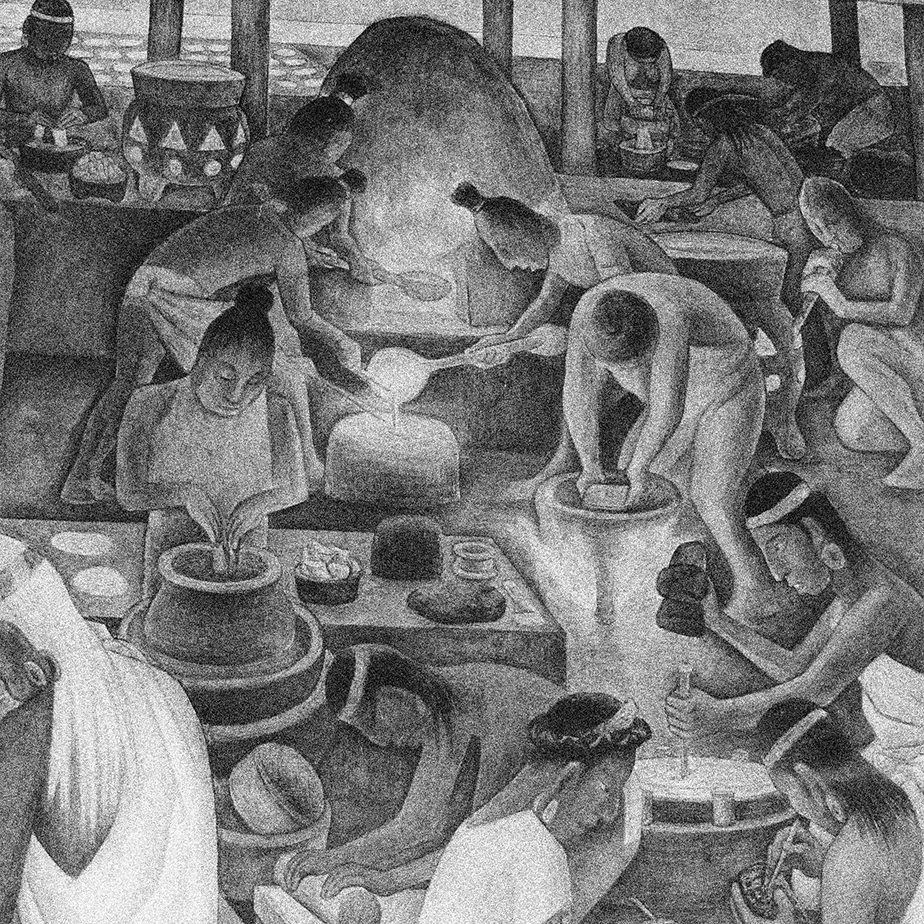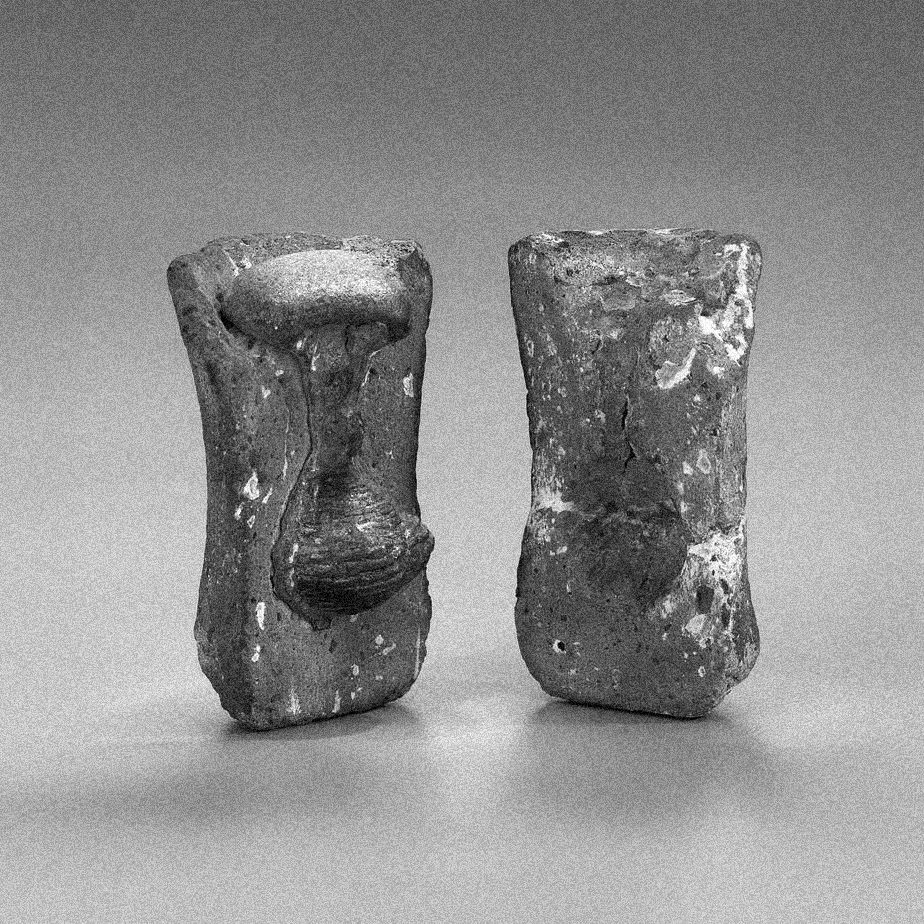

The technology of glassmaking and its adaptations emerged in Mexico starting in the late 16th century. Artisans began to manipulate the material, resulting in high-quality pieces like those produced today by Nouvel Glass, a collaborator in our blown glass production.
21 August, 2025


This spring, we debuted Exhuma, EWE’s newest collection—an homage to pre-Hispanic innovation and Purépecha metallurgy—at Les Ateliers Courbet in New York.
The technique used to craft this series—comprising a console a coffee table, and a mirror—is an adaptation of the casting methods developed by the Purépecha around 1450 AD.
Metal was melted and poured in its liquid form into molds made of clay, sand, charcoal, or stone. Furnace heat was maintained and increased by blowing through long tubes, and the molten metal was poured into molds placed on hot ashes.





Once solidified, the object was extracted by breaking the mold and then polished using stones. This process was deeply tied to the resources and landscape of the region.
Western Mexico is rich in various metals such as gold, silver, and copper. Based on interpretations of Indigenous accounts, the existence of pre-Hispanic mines in southern Michoacán has been confirmed, the Indigenous peoples of the region collected stones from these mines and extracted metals from them. These metals were not only utilitarian—they also held deep cultural meaning.
Metals played a key role in the social, economic, and political structure of the Purépecha region, often used as tribute offerings. However, there were also everyday objects—such as tajaderos and jewelry—that served both as currency and sacred artifacts. Metal adornments were especially common; body ornamentation has long been a distinctive trait of society, with the value of these personal objects tied closely to one’s social role and hierarchy. This legacy continues to shape how we understand the value of metalwork today.

Mexican metalworking carries ancestral knowledge and practices that have been passed down through generations. At EWE Studio, we are proud to incorporate these traditional techniques into our work and to highlight this artisanal legacy.
With love,
EWE